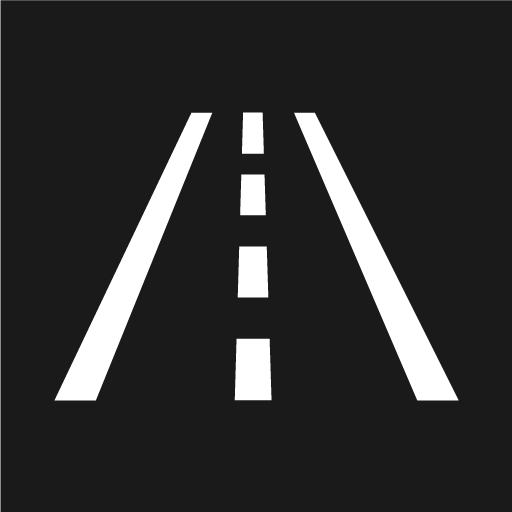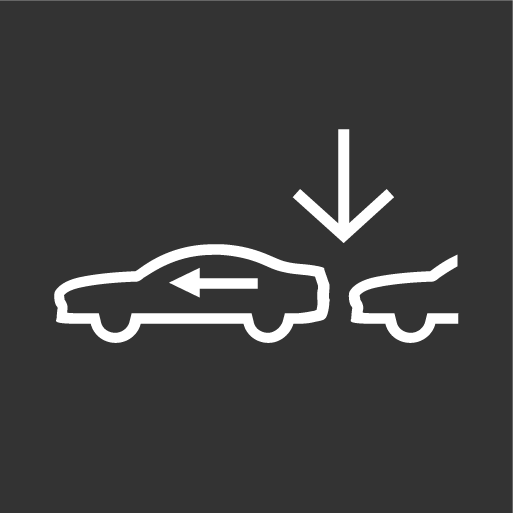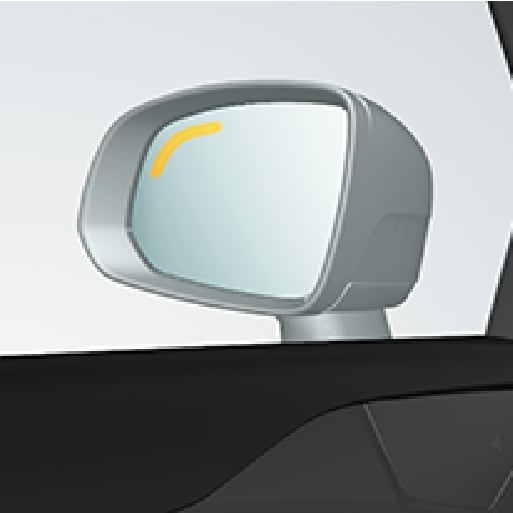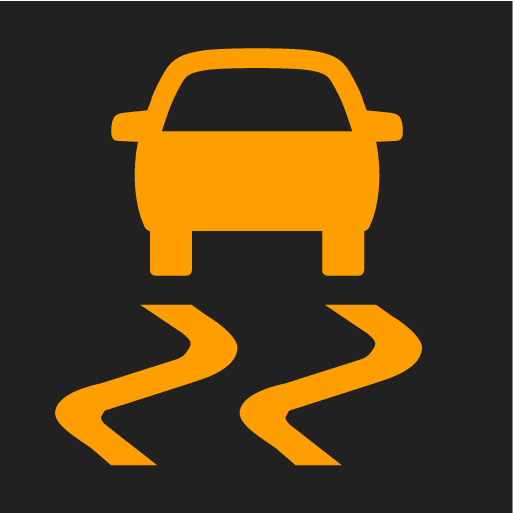Warnings from various driver support systems
What is happening in your car?
There are several functions in your car that can contribute actively to increasing safety in traffic, both for yourself and other road users. You have the option of viewing a list of some of the functions and what they may do – the aim of this is to ensure you are not surprised by the activation of any of the functions. If a function should be activated, you can also be informed of this via a text message in the driver display.
Note
Warning with the symbol, acoustic signals, visual signals or vibration
The driver support functions in your car can alert you in different ways. For example, with vibration in the steering wheel, brake pulse, with visual or acoustic signals or via symbols in the driver display.
Assistance at risk of collision
Assistance at risk of collision1 can assist the driver to avoid or mitigate a collision with a warning, automatic braking and steering assistance.
Your experience of the function may therefore differ depending on which subfunction is activated.
- Collision warning
- Assisted braking
- Automatic braking
- Steering assistance
Lane Keeping Aid (LKA2)

Lane assistance can help you to reduce the risk of the car unintentionally leaving its own lane.
- Steering assistance: If the function detects that the car is approaching a lane line, you will feel a gentle steering action applied to the steering wheel. You must have both hands on the steering wheel for the function to work.
- Warning: If the function detects that the car is approaching a lane line, you will be alerted by vibration in the steering wheel.
- Both: You are alerted with vibration and a gentle steering action applied to the steering wheel.
Rear Collision Warning (RCW)*

Rear Collision Warning is a system that can help you avoid being hit by a vehicle approaching from behind. If the system detects a risk of rear-end collision, it can give a warning and take the following action, depending on the conditions.
- Intensive flashing with the direction indicators.
- At low speeds the function can tension the seatbelts by activating the seatbelt tensioners, and also activate the Whiplash Protection System.
- If the car is stationary, the foot brake can be activated.
Blind Spot Information (BLIS)
BLIS is designed to give a warning of rapidly approaching vehicles as well as vehicles diagonally behind and to the side of your vehicle so as to give you assistance in heavy traffic on roads with several lanes in the same direction.

- Alerts with an indicator lamp in the side mirror, with fixed glow and flashing light.
Driver Alert

The function is intended to attract the driver's attention if he/she starts to drive less consistently, e.g. if he/she becomes distracted or starts to fall asleep.
- Acoustic signal combined with a symbol in the driver display and a message.
Warning and auto-brake when reversing

- Cross Traffic Alert (CTA)* is designed to alert for crossing traffic when the car is being reversed.
- Rear Auto Brake (RAB) is intended to help the driver detect stationary obstacles that may be directly behind the car when it is being reversed.
- A warning signal and the graphic for parking assistance illuminate to indicate the position of the obstacle.
- If the driver does not pay attention to the warning and a collision is unavoidable, the car is auto-braked and an explanatory text message is shown for why the car was braked.
Electronic stability control (ESC)

Electronic Stability Control (ESC3) helps the driver to avoid skidding and improves the car's traction. When the system intervenes, the symbol appears in the driver display with a flashing light. If a fault has occurred and the system is unavailable, the symbol appears permanently lit together with a text message.
Warning
The functions described are supplementary aids - they cannot handle all situations in all conditions.
The driver always bears responsibility that the vehicle is driven safely and that applicable road traffic rules and regulations are followed.